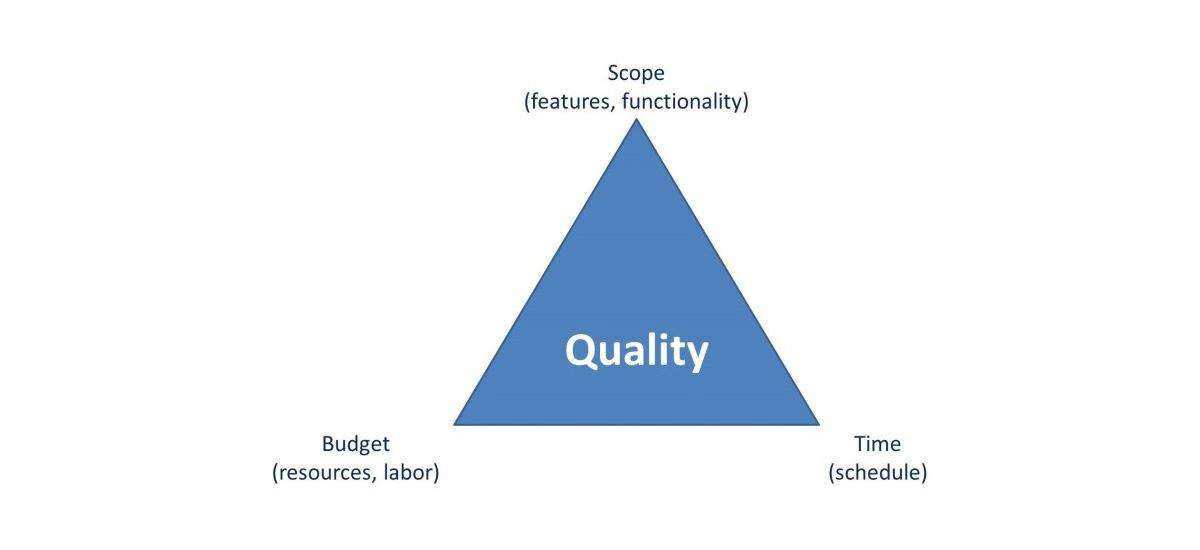Time Is Not On Our Side

“If you don’t have time to do it right, when will you have time to do it over?” – John Wooden
In recent months we have noticed a growing trend that is challenging the technology industry, especially our niche of audio visual: truncation of project timelines. In my conversations around InfoComm and other industry events this year, this does not seem to be limited to just our customers or just our region. Based on what I have heard from our contemporaries, companies like IMS are all reporting the same problem affecting us in the Northeast Region. The systems integrators are being brought into projects much later than is ideal and as designs change and the project approval process continues on, the anticipated completion date of the project does not move. This creates a very large problem for a quality integrator to be able to deliver the functionality for which the clients are looking, at a reasonable price. I am reminded of a famous triangle used in project management:
Budget, Scope, and Time are the three correlating aspects of any project. They each are affected when just one of them is changed. It makes logical sense: if the scope of the project is growing, then the budget for that project also will grow and the timeline to complete that project will extend. I find that this is especially the case in the audio visual world.
Unlike other construction trades, such as carpentry and high voltage electric, the audio visual industry is unique. There are not many trade schools that focus on the technologies we are asked to implement day-in and day-out. Part of the reason why there are no schools is because there are no regulated STANDARDS across the different manufacturers and similar technologies that they make. Instead, we are balancing in a world of manufacturer specifications and proprietary languages for programming and configuration. Learning each of the manufacturers’ specifications and gaining the experience to be able to expertly install the systems that we install is a costly, time-consuming process that falls on the Systems integrator to manage with their skilled technicians. Without these skills, the systems that are installed may not perform to the scope that is being defined by the client. This is where a value-add Design-Build systems integrator is providing the professional service to the customer.
Because the skills are unique and hard to obtain, this leaves a limited pool of people that a systems integrator can call upon to install systems. Most general contractors and end clients don’t realize that. I’ve heard so many times, “well find people to throw at the job.” I can do that, but it won’t get the job done and certainly not to any quality our customers are looking for us to provide. With only so many limited resources to work with, it makes it very difficult for integrators to meet a truncated timeline for a project. The hours are going to need to be expended to make the system hum right the first time and not be riddled with bugs for the next six months.
The AV industry is attempting to fix the issue that we face for having the right talent – through recruitment techniques, standards development, training programs, etc. However, this is not an easy problem to solve and it will take time before adoption. Until that time, when you’re planning your next audio visual project, keep that triangle in mind. End-users will play a critical role in solving this challenge when developing or managing project budget, scope and timelines by keeping in mind that any change in one will affect the other two. As a technology partner, we want to help you solve your technology problems correctly the first time, within the budget you have allocated, in a reasonable timeline to complete the work.
By Michael Shinn, Vice President of Customer Relations
Share This Article
Categories
Latest Posts

Philadelphia 2026: Is Your Venue Ready for the Spotlight?

Scalable AV Infrastructure for Life Science Enterprises

Extend Your Reach: The Power of Virtual and Hybrid Events

Why Every Detail Matters in Investor and Year-End Meetings

IMS Technology Services Welcomes John Beaulieu
Tags
Contact Us
- Headquarters: 3055 MCCANN FARM DRIVE, GARNET VALLEY, PA 19060
- Event Staging: 2000 COLUMBIA AVENUE, SUITE 300, LINWOOD, PA 19061
- Southeast Office: 404 SUNPORT LANE, SUITE 350, ORLANDO, FL 32809
- Phone: + 610-361-1870
- Contact Us
Services
Recent Posts

Philadelphia 2026: Is Your Venue Ready for the Spotlight?

